Website performance needs constant improvement. But how do we find the areas that need improvement? That’s where the KPIs or website metrics will help you.
Key Performance Indicators (KPIs) are vital tools that provide insights into the effectiveness of your online presence. By monitoring and analyzing these metrics, businesses can make informed decisions to enhance user experience, increase conversions, and drive overall success.
This blog will explore 14 critical website metrics that every online business should track.
1. Website Traffic
Understanding the number of visitors and how they interact with your site is fundamental. It helps in gauging overall interest and identifying popular content
Unique Visitors
One fundamental metric is unique visitors, representing the number of distinct individuals visiting the website within a specified timeframe. This metric serves as a barometer for the actual reach and scale of the online audience.
How do we understand the actual size and reach of your audience?
For this, you can utilize web analytics tools like Google Analytics and Adobe Analytics, to access information on unique visitors your website is getting. Analyze unique visitors over a time frame to identify trends and patterns.
We can reach meaningful conclusions by comparing unique visitors with other key metrics like page views and conversions.
Page Views
Pageviews, another essential metric, quantifies the total number of pages viewed by visitors. By analyzing pageviews, businesses gain insights into the popularity of specific content and identify areas that may require enhancement or promotion.
You may be wondering how to evaluate the popularity of your content and identify areas for improvement.
Use analytics tools to identify which pages receive the most views. Also, examine the flow of user navigation through your site to understand how visitors move between pages. And analyze page views based on content categories or types to understand user preferences.
Sessions
Sessions, measuring the duration during which a user interacts with the website, offer contextual information on user behavior. This metric aids in gauging the effectiveness of content and the overall user experience.
If you want to gain insights into user behavior and assess the effectiveness of the content, then you need to analyze sessions.
By analyzing the average duration of user sessions, you can get an in-depth understanding of user engagement. You can also find your website’s peak hours to promote or market your products and services.
How long users spend on your site matters. Longer sessions generally indicate engagement and interest in your content.
2. Traffic Sources
Knowing where your traffic comes from allows you to optimize marketing strategies. A balanced mix of sources is often ideal for sustainable growth. Dependence on a single traffic source may pose risks, so ensure that you have diverse strategies to bring visitors to your website.
Organic Search
It comprises visitors who find your website through search engine results without any paid promotion.
You can improve your organic search traffic by identifying the keywords that drive organic traffic and optimizing your content accordingly. Keep monitoring your search results page ranking to find how keywords are affecting your traffic.
High organic search traffic means you are doing it right and getting strong online visibility in return for your efforts.
Referral
Referral traffic represents visitors who land on your site through external sources such as other websites, social media, or online forums.
You can analyze your social media platforms and make improvements that will increase your social media presence and audience engagement which in turn will drive more visitors to your website.
You can also collaborate with other websites which can refer your website to their visitors. Nurturing the relationship with the referring website amplifies your reach and traffic to your website.
Direct
Direct traffic comprises visitors who access your website directly by typing the URL into their browser or using bookmarks.
High direct traffic signifies brand recognition and it can be high due to offline marketing. So, keep trying to improve your brand visibility through both offline and online channels.
3. Bounce Rate
The bounce rate indicates the percentage of visitors who navigate away from the site after viewing only one page.
A high bounce rate may signal issues with content relevance or user experience. Not meeting customer expectations is one of the main reasons behind high bounce rates. Make sure your website delivers relevant content to your target audience.
Slow-loading pages lead to visitors exiting your site without a second thought! Evaluate your page load times and ensure it is between 0-2 seconds. Anything above 3 seconds should be looked into and resolved immediately.
Mobile responsiveness of your site is a must now along with an interactive landing page design that will capture your visitors. Also, your visitors should be able to easily navigate your website, this can be achieved with the help of good design, better CTAs, and better organization of web pages into clear categories.
Another way to reduce bounce rate is by implementing A/B testing to figure out what resonates best with your audience.
4. Conversion Rate
The conversion rate tracks the percentage of visitors who complete a desired action, such as making a purchase, filling out a form, subscribing to a service, or signing up for a newsletter. It’s a key indicator of website effectiveness.
Web analytics tools like Google Analytics can be used to set up conversion tracking. If your website has a multi-step conversion process, then analyze the performance at each step to identify potential drop-off points and optimize accordingly. Also, analyzing the touchpoints that contribute to conversion, will give a better understanding of what is working well for your website.
5. Exit Pages
The exit rate represents the percentage of visitors who leave your website after viewing a specific page. Unlike the bounce rate, which measures exits from the initial landing page, the exit rate focuses on departures from a particular page.
Identifying the pages where visitors commonly exit helps pinpoint potential issues or content that needs improvement. High exit rates on crucial pages, such as product pages or content pages, need immediate attention.
One easy way to get more information on this is to implement exit surveys to gather direct feedback from visitors leaving specific pages. Understand their reasons for departure and use insights for improvements.
6. User Demographics
User demographics refer to the quantifiable characteristics of your website audience, including factors such as age, gender, location, education, income, and other relevant attributes.
Understanding your audience’s demographics helps you tailor content and marketing strategies to better resonate with your target market.

Google Analytics and Social Media Insights can be used to access user demographics.
Leverage user demographics with the help of customized marketing campaigns for specific demographics, implement location strategies like translating content, and consider cultural nuances for different audiences as per their geography.
7. Customer Acquisition Cost (CAC)
CAC measures the total cost of acquiring a new customer. Tracking this website metric helps in optimizing marketing spend for better ROI.
It is always advised to have a lower CAC with higher results. Always look out for cost-effective acquisition strategies.
Direct calculation of CAC is not possible, but it can be calculated with the help of various data collected with the help of Google Analytics, Google Ads, Facebook Ads, and LinkedIn Ads.
For example, if you spent “X” amount on marketing and sales for a month and you acquired “Y” customers, then your CAC will be “X” divided by “Y”.
8. Customer Lifetime Value (CLV)
CLV is the predicted total revenue a business expects to earn from a customer throughout its entire association.
Knowing the value a customer brings over their lifetime helps in strategic decision-making, especially in customer retention efforts.
A high CLV suggests that your business effectively retains customers and generates substantial revenue from each. This can be a sign of customer satisfaction, loyalty, and effective marketing strategies.
Always prioritize customer retention strategies. Retained customers are likely to contribute more to the overall CLV than acquiring new customers.
9. Churn Rate
Churn Rate, also known as customer attrition rate, represents the percentage of customers who stop using a product or service over a specified period.
These are crucial for subscription-based businesses. Develop and implement customer retention programs to reduce churn rate.
If you are able to systematically analyze, interpret, and manage churn rate, then you are gaining customer loyalty and sustaining business growth.
10. Cart Abandonment Rate
Cart Abandonment Rate is the percentage of online shoppers who add products to their shopping cart but do not complete the purchase by checking out. It reflects the number of potential sales lost during the checkout process.
E-commerce businesses need to track the percentage of users who add products to their cart but do not complete the purchase. Reducing cart abandonment is key to increasing conversions.

A low cart abandonment rate means you offer them a streamlined and user-friendly checkout experience. Keep monitoring this website metrics and make sure you keep it a decreased level.
11. Click-Through Rate (CTR)
CTR is a metric that quantifies the percentage of users who click on a particular link, ad, or call-to-action out of the total number of users who viewed it.
A high CTR indicates that a significant percentage of users who viewed the content were compelled to click on it. This suggests relevance, compelling messaging, and effective targeting.
12. Cost per Click (CPC)
Cost Per Click (CPC) emerges as a fundamental website metric, providing insights into the financial aspect of online campaigns. CPC represents the average amount a business pays each time a user clicks on their digital ad.
For paid advertising campaigns, monitoring the cost per click helps manage the budget and optimize ad spend.
13. Customer Satisfaction (CSAT)

CSAT is a metric that gauges the satisfaction level of customers based on their experience with a product, service, or interaction. It is often measured by posing a simple question, such as “How satisfied are you with your experience?” and asking respondents to rate their satisfaction on a scale.
Surveys and feedback mechanisms help gauge customer satisfaction and loyalty, providing valuable insights for improvements.
14. Net Promoter Score (NPS)
NPS is a website metric that assesses customer loyalty and the likelihood of recommending a company’s products or services to others.
It is measured by asking a single question: “How likely are you to recommend us to a friend or colleague?” and categorizing respondents into Promoters, Passives, and Detractors.
You should then devise ways to keep your promoters satisfied with good offers. With passives and detractors, you should find ways to win them over. By addressing the issues they have faced with your product and services, make them feel like a valued customer.
Let’s Wind Up
KPIs and website metrics will give you a good understanding of how things are going for your online business.
If your business is flourishing, then of course everything must be going well for you. But if the case is the opposite, then you need to figure out the exact problem areas and find a solution for that.
Keep monitoring these website metrics and you can easily see where you are lacking. And this will help you find a solution easily. Finally, you will have a successful online business that is growing day by day. Learn how to make these web analytics work for you!
